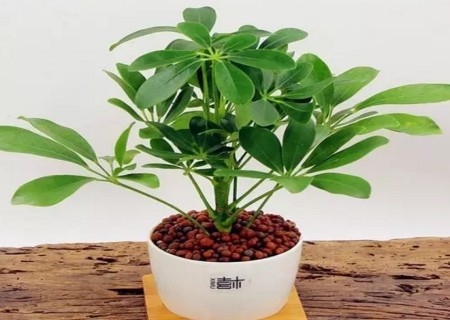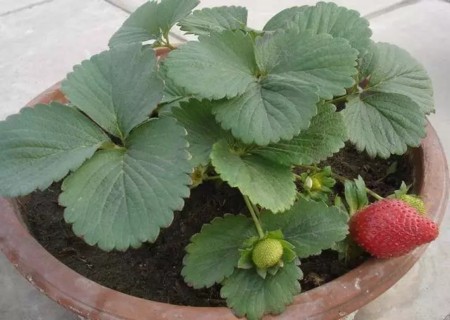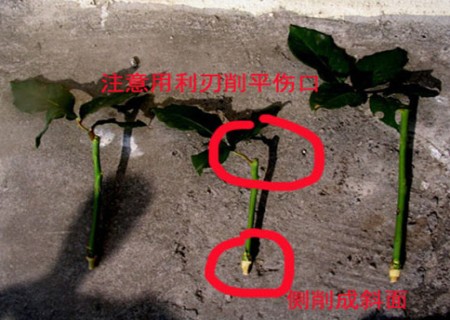Planting method of potted duck foot wood
Duck foot wood, also known as goose palm wood, can withstand weak light conditions, like semi-shade, is very suitable for indoor cultivation plants, is one of the most popular indoor cultivation plants in the world, and has high ornamental value. Its plant shape is beautiful, and has very strong adaptability, it is an excellent potted plant, it can be watched on the balcony all the year round, but it is not suitable to be placed in a place where the sun is fierce, and it can also be arranged in a sub-living room, study or even a bedroom, showing a natural and harmonious green environment.

Duck foot wood has the effect of absorbing nicotine and other harmful substances. Especially for families who smoke again, it is very suitable for planting duck foot wood. It can bring fresh air to smoking families, and the leaves can absorb nicotine and other harmful substances emitted by cigarettes when they burn, and convert them into substances needed by plants themselves through photosynthesis. In addition, duck foot wood can reduce the formaldehyde concentration of 9 mg per hour, after home decoration, placing duck foot wood is the most suitable.
Next, the editor introduces the family pot planting method of duck foot wood.
1. Distribution of soil
The planting soil of duck foot wood requires deep, loose and fertile soil. Family potted plants are generally made of rotten leaf soil or peat soil, pastoral soil, plus 1x4 river sand or perlite. In order to ensure that the soil is fertile, a small amount of cake fertilizer can be added to the soil as base fertilizer.
2. Upper basin
Choose robust seedlings with well-developed roots and plant them in pots before germination in late autumn or spring.
3. Colonization
Put a layer of rubble on the bottom of the container before planting, add a small amount of nutritious soil, put the plant into the flowerpot and add a small amount of soil roots to closely combine with the soil. Then pour the water through and compact the soil. After the new plants are planted, they should be placed in the semi-shade for a week, and then gradually transferred to the sun for normal management.
4. Watering
If the duck foot wood is maintained in a plastic flowerpot, it should be drained in time, and the soil should be watered without waiting for dryness when watering, and keep the soil moist at any time. When the weather is dry, spray around the plant, pay attention to cover the rain during the rainy season, and avoid stagnant water in the basin. The amount of water varies according to the season, and more water is needed in summer. Water once a day to keep the basin soil moist, watering every 3-4 days in spring and autumn, such as too much water or waterlogging, it is easy to cause root rot.
5. Fertilization
Fertilization is applied once a week during the summer growth period, and compound fertilizer such as nitrogen, phosphorus and potassium can be applied after loosening the soil. During the period from May to September, apply 20% cake fertilizer and water twice a month. For mosaic varieties, if there is more nitrogen fertilizer and weak light, the plaques on the leaves will not be obvious.
6. Pruning
Duck foot wood grows fast, and it is easy to sprout and grow branches. An adult plant needs regular shaping and pruning to keep the plant shape neat and beautiful. The duck foot wood, which has been preserved for many years, has perennial old branches and the plant shape is too large, so it can be re-cut in combination with changing pots when the new buds germinate every year to cut off branches, leaves and old roots.
7. Change the basin
Duck foot wood needs to be changed every spring, and if you use plastic pots, you need to pay attention to the loose soil. Pot soil is prepared with peat soil, rotten leaf soil, perlite and a small amount of base fertilizer, and can also be potted with fine sandy soil. Before new buds germinate in spring every year, pots should be changed, part of the old soil should be removed, and potted with new soil. When the old perennial plants are too large in indoor cultivation, they can be pruned in combination with changing pots.
Time: 2019-05-24 Click:
- Prev

Planting method of Strawberry seed
Many friends bought strawberry seeds, on the one hand, they want to beautify the house, on the other hand, they also want to taste the joy of a bumper harvest: in order to enable friends who plant for the first time to master basic skills, now introduce some relevant knowledge to you! At the same time, you are also welcome to share your feelings and experience with you.
- Next

Planting method of rose cuttings
Roses are plants that can be cut to survive, so you can try to cut off the withered flowers, subtract the branches and leaves, leave a branch with a viable leaf bud, cut the slant, insert it into the soil, and put it in the shade and water it on time. The surviving rose leaves will gradually grow and take root when they reach about five leaves.
Related
- Fuxing push coffee new agricultural production and marketing class: lack of small-scale processing plants
- Jujube rice field leisure farm deep ploughing Yilan for five years to create a space for organic food and play
- Nongyu Farm-A trial of organic papaya for brave women with advanced technology
- Four points for attention in the prevention and control of diseases and insect pests of edible fungi
- How to add nutrient solution to Edible Fungi
- Is there any good way to control edible fungus mites?
- Open Inoculation Technology of Edible Fungi
- Is there any clever way to use fertilizer for edible fungus in winter?
- What agents are used to kill the pathogens of edible fungi in the mushroom shed?
- Rapid drying of Edible Fungi

